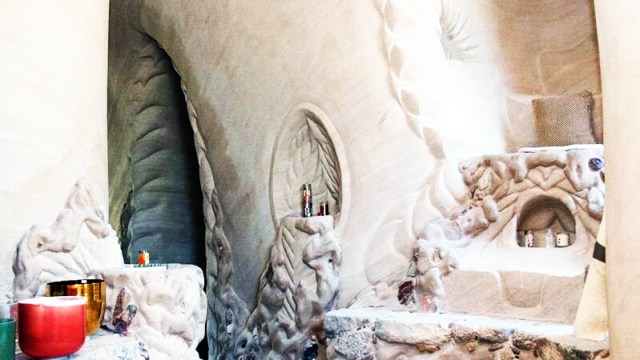Astronomers Push The Limits Of Hubble
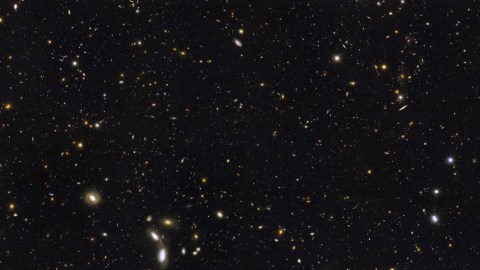
By combining Hubble data with other views from great, space-based observatories, we’re shedding new light on the Universe.
“The wonder is, not that the field of stars of so vast, but that man has measured it.” –Anatole France
If you could gather about 250 million times as much light as your eyes do and see thousands of times as sharply, then a region of the sky no larger than a thin crescent Moon might reveal a view like thta shown above. Taken by the Hubble Space Telescope, the image above is part of NASA’s Great Observatories Origins Deep Survey (GOODS), the first step in NASA’s CANDELS program.
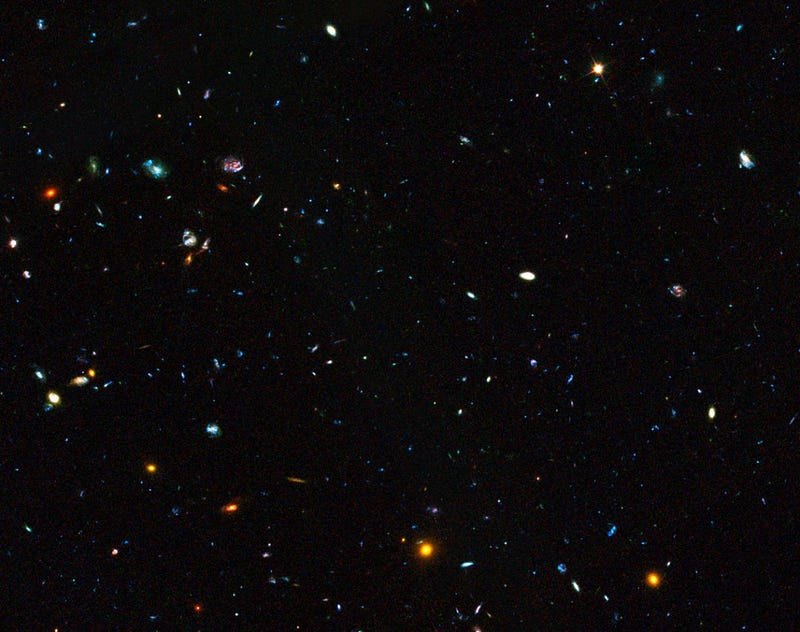
By looking back in time to the farthest regions of the Universe in many different wide-field views, scientists probe how star-and-galaxy formation grows, peaks and declines in the Universe.
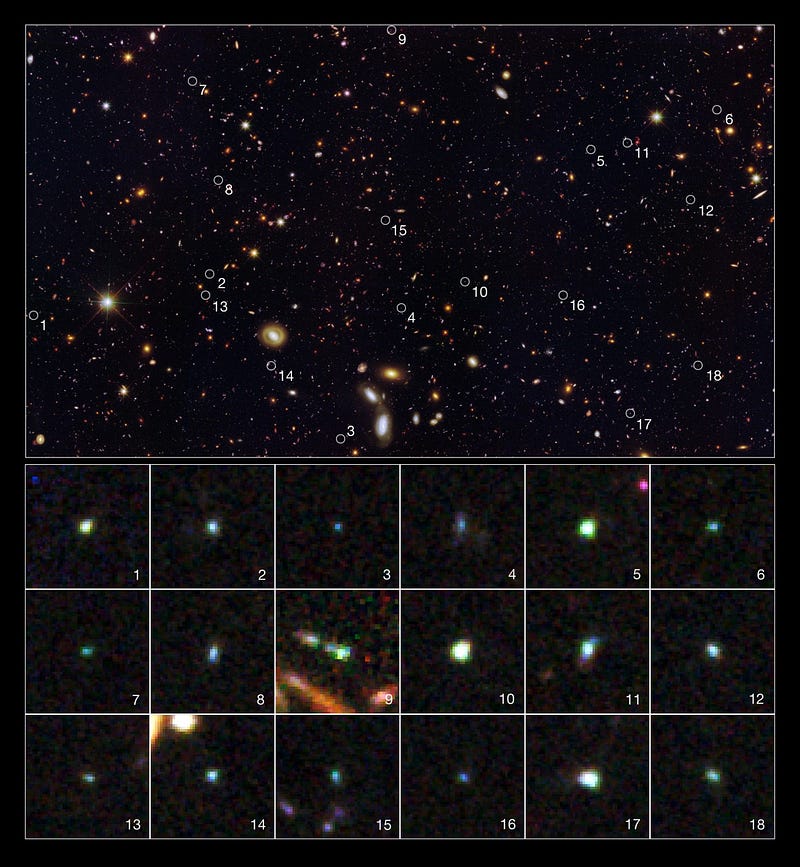
These surveys were instrumental in determining that the Universe becomes reionized and transparent to visible light about 550 million years after the Big Bang, and that star formation reaches a maximum about 2.5 billion years later. Since then, even as new galaxies and stars form, the total number of new stars steadily declines.
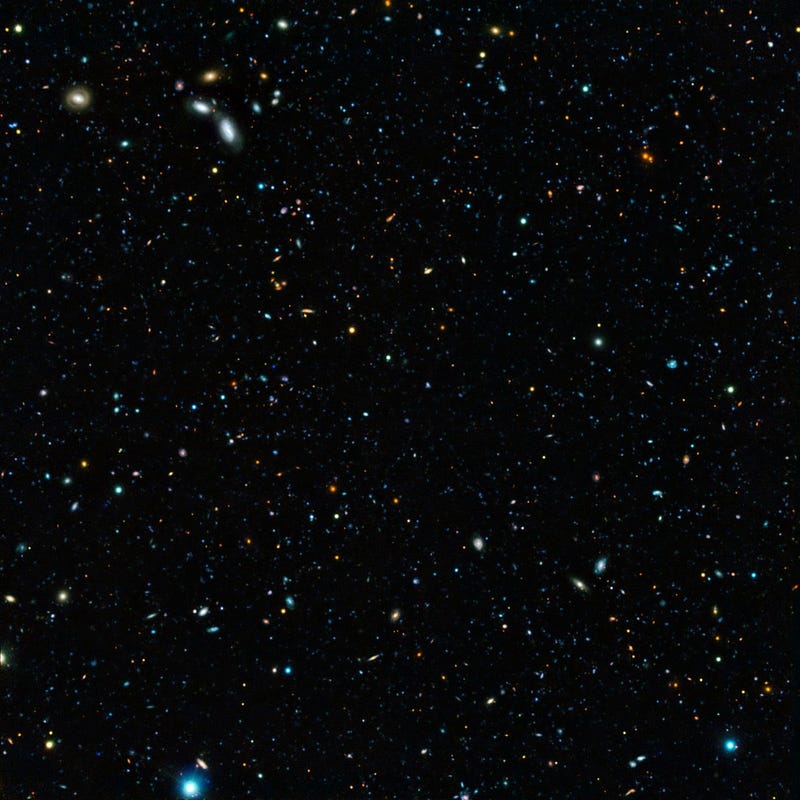
Hubble observations are then combined with X-ray, ultraviolet, and infrared observations from other great observatories, teaching us about black holes, neutral matter, and objects with extreme redshifts.
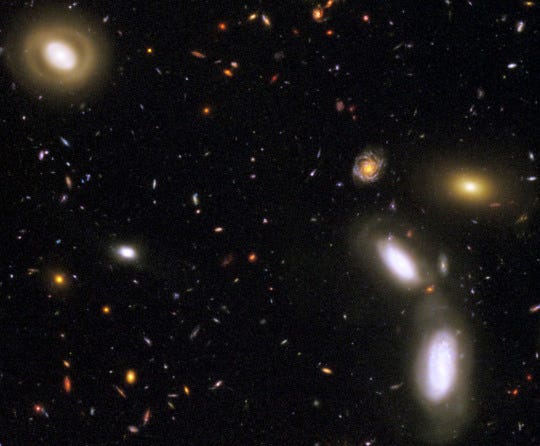
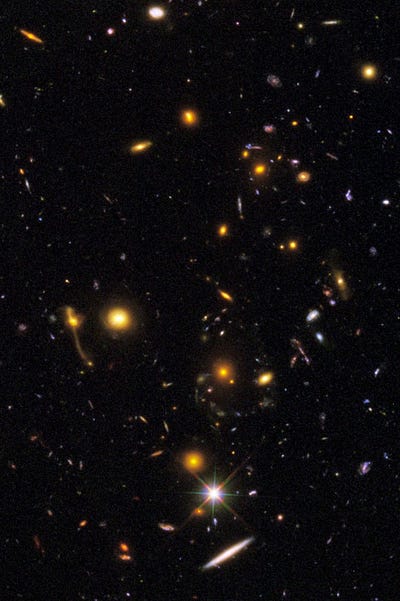
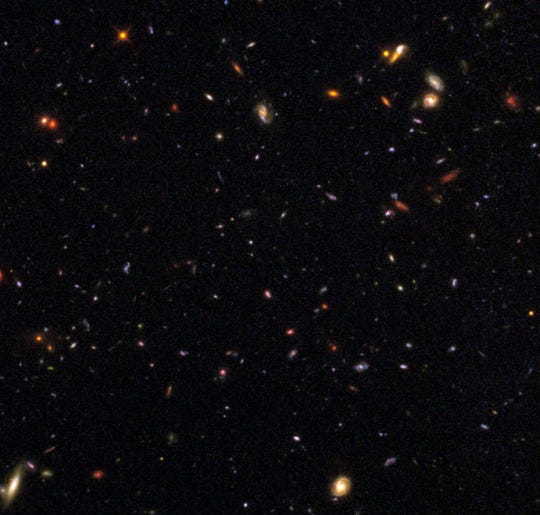
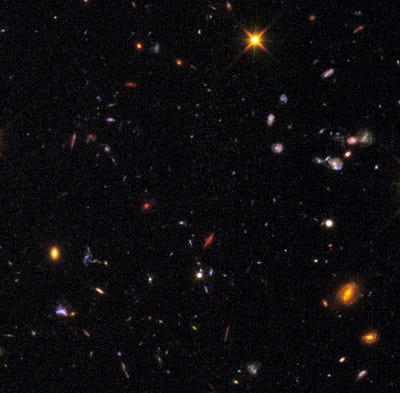
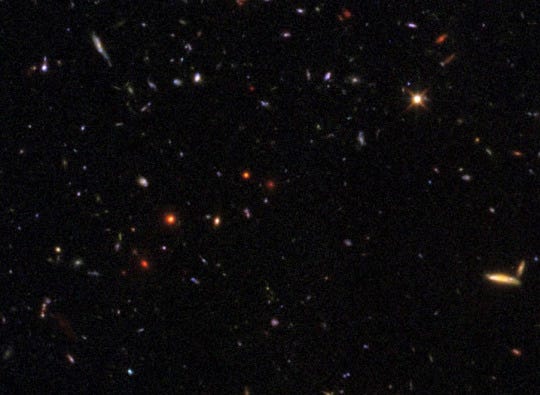
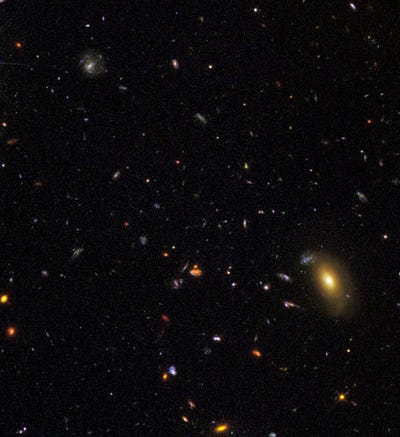
When the James Webb Space Telescope flies, it will push these frontiers back even further, shedding light on our true cosmic origins.
Mostly Mute Monday tells the story of a single astronomical phenomenon or object in visuals, images and video in no more than 200 words.
This post first appeared at Forbes. Leave your comments on our forum, check out our first book: Beyond The Galaxy, and support our Patreon campaign!





